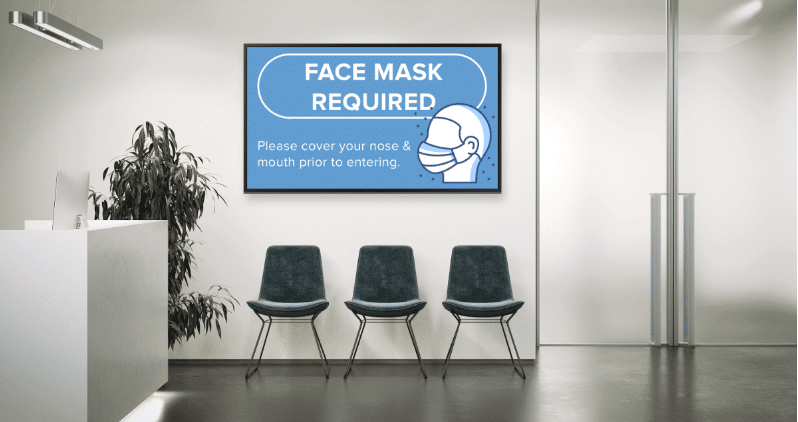It’s clear that the way people approach healthcare providers is changing, but the stakes are higher than you might think. When it comes to health, growing distrust means consumers no longer take your brand at its word on reliability and safety.
If you are part of a health organization, your potential patients or customers need to see convenience, authority, and, most importantly, evidence that they can trust you with their health and finances. The secret to proving the dependability of your brand? Listen to what your patients need and build your marketing campaigns accordingly.
In order to do this, make sure your health business is using each of these 7 marketing tools that will prove your commitment to convenience and increase brand trust.

Many patients use mobile devices to access health information and services. Is your website mobile-friendly?
1. A mobile-friendly website
Your website’s quality is a tremendously significant factor in establishing your business or clinic’s credibility and reputation. People do not settle for second-best when it comes to their health if they can help it—would you entrust your treatment to someone who’s website looks like an amateur pieced it together? Certainly not. You’d feel much more comfortable working with an organization that puts considerable effort into the first interaction patients or customers are likely to have with it.
In addition, many people use their phones to browse the internet. Whether someone is hurriedly looking up the nearest urgent care facility when away from home or searching for new health insurance options, they appreciate (and expect) an easily navigable, user-friendly mobile website that presents them with the information they need swiftly.
To make your website more mobile-friendly, use your platform’s developer tools to simulate various phone sizes to optimize how it appears on different users’ screens. Disable pop-ups and text-blocking advertisements that may drive people away and make sure your website’s design is simple, elegant, and easily navigable with large font sizes. Pay attention to your pages’ load times, too—visitors are much more likely to bounce if it takes longer than five seconds.
2. Chatbots for basic tasks
Not all customer service requires a live person. Sometimes, speaking to a person is even inconvenient, such as when a patient or customer wishes to ask a quick question but has to wait several minutes on the phone to reach someone.
While human customer service representatives will always be necessary to handle more complicated tasks, artificially intelligent chatbots can take care of the simple ones. Integrate one into your website that can answer questions and perform basic functions (such as updating personal information). Plus, chatbots are available day and night.
Your company’s engineering team can design a unique chatbot, but you can also take advantage of pre-existing and easily implementable options, such as Botscrew and Chatfuel.

Patient needs go beyond business hours. Do you have a tool in place to help them accomplish simple tasks after hours?
3. High-quality customer experience features
On a related note, an all-around high-quality customer experience will do wonders for your marketing efforts. It’s one thing to promote how thorough and considerate your organization is, but it’s imperative to follow through so that you will benefit from word-of-mouth marketing.
Analyze your operations to determine where people get stuck. One of the best things you can do to improve your customers’ experience is to ask them for feedback through an email survey—they have an idea of what they want, and you’d be wise to listen to them.
People seek ease and convenience, so implement features into your website and processes that include online registration, easily accessible aftercare information, and online bill pay. Patients and customers who can interact with you on their own time have more reasons to be loyal.
4. Telehealth options
If your healthcare organization provides patient care, then it’s advantageous to offer telehealth options as well. 60 percent of millennials from a study in 2015 indicated that they would like to see telehealth become more available, and this number has likely increased due to COVID-19.
The ability to consult with a doctor via video chat can reduce the spread of diseases and is more accessible to people without transportation. If your organization offers these services, then partnering with healthcare marketing agencies can help effectively market them to the public, attracting more patients Showcase a quick example of a staged telehealth appointment on social media so that people will know what to expect.
5. A robust content strategy
Because online advertisements are losing their effectiveness, patient-centered content can assist your marketing strategy. While you probably do not have the time or resources to create a library of medical material as comprehensive as WebMD’s or MayoClinic’s, you can use articles, testimonials, blog posts, videos, and other outlets to boost your brand’s reputation and authority.
Prospective patients and customers value transparency. They will review your website to learn what past patients think of you and what to expect from a visit. Content is not about selling yourself—instead, it’s about building trust so that people will turn to you when the need arises.
A comprehensive content strategy entails publishing content on external outlets, but an easy place to start is with social media and a blog. Conduct keyword research that is relevant to your audience’s inquiries to guide your ideas and implement them into content without overstuffing.
6. Location-specific SEO
If you belong to a healthcare organization that requires people to visit a physical location for your services (e.g., hospitals, clinics, physical therapy centers, and rehabilitation centers; businesses like health insurance brokers can conduct themselves online and via phone calls), then you need to leverage location-based SEO into your healthcare marketing strategy.
SEO improves your internet searchability, but the location-specific variety magnifies the effect for people in your immediate geographical area. A dentist’s office on one coast will probably not serve patients on another, so if you are based in a particular city, you need to spread awareness amongst people you are accessible to.
You can include location-based SEO in your content strategy by using keywords such as, “best dental practice in Denver.” You should also claim your Google My Business page (helpful if you want to appear on Google Maps) and geotag social media ads so that people in your area can find you easily.

Are you still using printed materials to get information to clients? Digital signage offers an efficient—and hygienic alternative.
7. Digital signage
Digital signage is a strategic marketing tactic that can improve patient experiences. Possibilities include displaying wait times in waiting rooms, relaying medical information in hospital rooms, and communicating other critical information to people when and where they need to know it. TV screens placed around your premises are customizable, so you never have to resort to printing various posters, and they help establish a professional atmosphere. Enplug’s digital signage software can connect multiple screens and makes it easy to change images from a central dashboard.
Healthcare marketing depends on putting your audience’s needs first. The above tools can help you do so, but how you use them will ultimately determine your marketing campaign’s success.
This article originally appeared on the Enplug blog; reprinted with permission.








